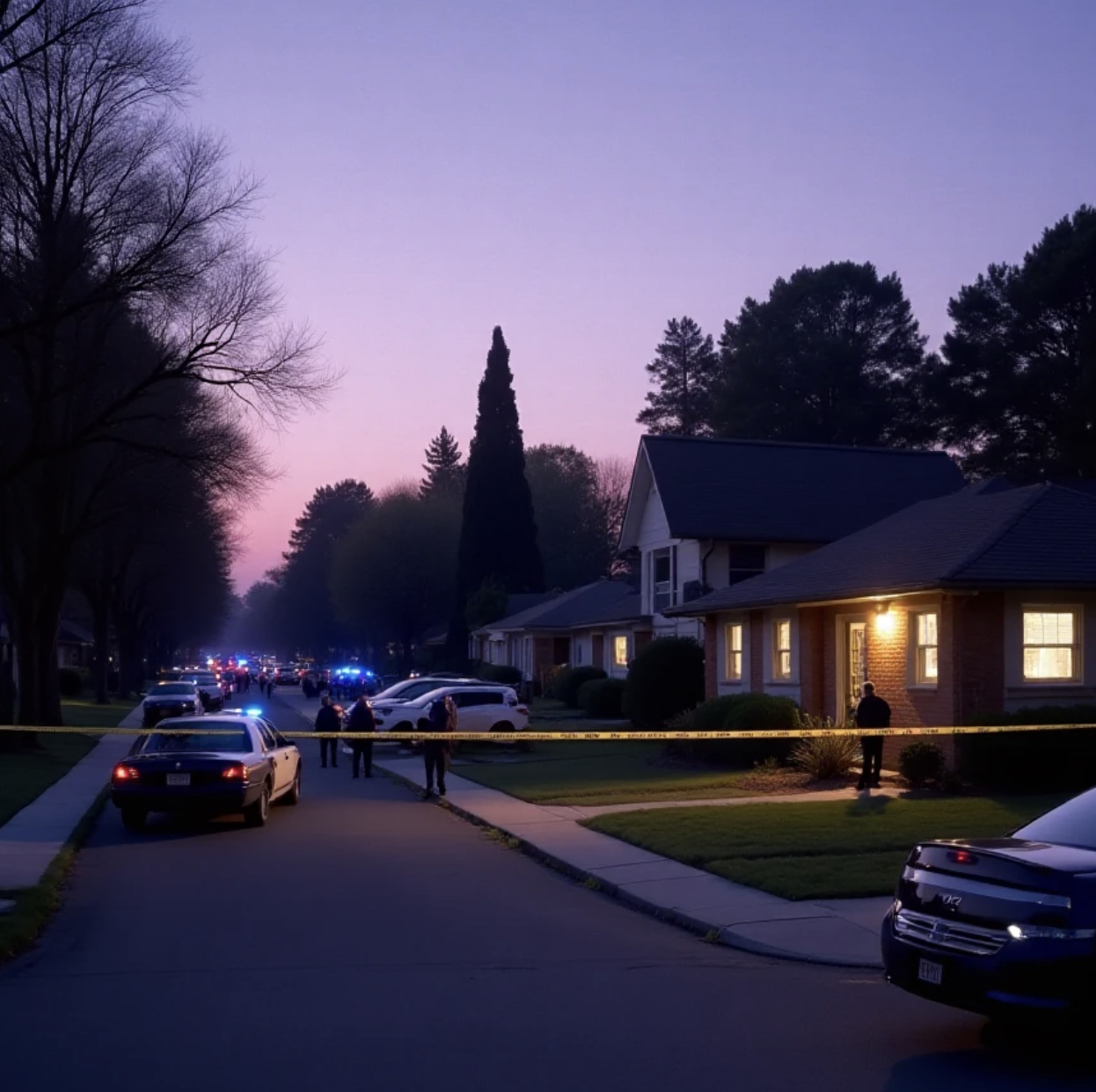 Before sunrise, something happened here—and now the whole street is sealed off. The once-bustling avenue, now eerily silent, is bathed in the soft, pre-dawn light, the air thick with anticipation and unspoken questions. Authorities arrived swiftly, their vehicles lining the street with flashing lights casting a surreal glow against the rows of brownstones that flank the road. The scene is a tableau of urgency and caution, an unfolding drama that has left residents and onlookers alike straining to understand the nature of the incident that has disrupted their quiet neighborhood.
Before sunrise, something happened here—and now the whole street is sealed off. The once-bustling avenue, now eerily silent, is bathed in the soft, pre-dawn light, the air thick with anticipation and unspoken questions. Authorities arrived swiftly, their vehicles lining the street with flashing lights casting a surreal glow against the rows of brownstones that flank the road. The scene is a tableau of urgency and caution, an unfolding drama that has left residents and onlookers alike straining to understand the nature of the incident that has disrupted their quiet neighborhood.
To the left, a row of police cars stands like sentinels, officers moving methodically, their faces etched with professionalism and focus. Their radios crackle with intermittent bursts of static and clipped phrases, a language of urgency known only to those trained to handle such crises. Yellow tape flutters in the gentle breeze, cordoning off the street and declaring it a space no longer belonging to the ordinary rhythms of daily life. It symbolizes both a barrier and a promise that answers will be sought.
Speculation is rife among the residents who have gathered at the perimeter, casting curious glances and whispering theories. Theories about why the street, usually echoing with the sounds of morning routines, has been transformed into a scene of mystery. Some recall hearing a commotion in the early hours, a series of unfamiliar sounds cutting through the stillness—the sharp bark of a dog, the shouts of agitated voices, followed by a sudden, chilling silence.
As dawn begins to break, painting the sky with hues of pink and orange, the scene takes on a new dimension. News vans appear, reporters eager to grasp the narrative, to distill the chaos into something comprehensible for the evening bulletin. Cameras whirr to life, capturing the somber dance of investigation unfolding beyond the tape. Microphones are thrust forward, probing for soundbites, for the nugget of information that will shape tomorrow’s headlines.
Among the assembled crowd, a woman stands silently, her gaze fixed on the scene. Her name is Clara, a lifelong resident of this street, familiar with its every creak and shadow. She clutches a cup of coffee, its warmth a comfort against the chill of uncertainty. Her mind drifts back to a conversation with her neighbor just yesterday, a mundane exchange about weather and gardening that now feels achingly significant—a snapshot of the ordinary rendered poignant in the light of unforeseen events.
The air grows lighter, the sun creeping over the horizon, casting long shadows that stretch across the pavement. The officers confer in low tones, their gestures deliberate and precise, a choreography of control amid the unknown. There is talk of an announcement, a briefing where perhaps some clarity will be offered, some explanation to placate the neighborhood’s rising unease. Until then, the street remains a puzzle, its pieces scattered and elusive, waiting to be meticulously pieced together by those tasked with unraveling its story.
For now, the street is a liminal space, caught between night and day, certainty and speculation. It holds its breath, a living entity, its heart beating in time with the anticipation of those who stand vigil. Whatever happened before sunrise has cast a long shadow, a mystery that will linger in the minds of those who call this place home, long after the barriers are lifted and routine returns.